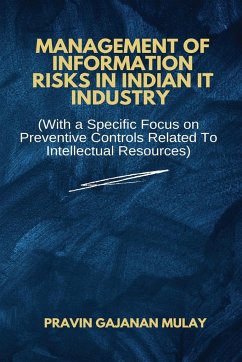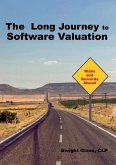This book details a research work carried out by the author in the domain of Information Risk Management in Indian IT industry with specific focus on preventive controls related to intellectual resources. The research explores the topic which is at the intersection of three independent domains viz. (1) Information Risk Management, (2) Preventive mechanism w.r.t. the most critical intellectual resource - human being and (3) The current related scenario in Indian IT industry. This book covers the pervasive nature of IT and increasing importance of information assets. These developments bring new risks and modify existing risks. Human element in the Information Risk Management is quite critical. Information risks and its HR component need to be handled proactively, so as to strengthen Information Risk Management. It covers overview of the subjects of Risk Management, Information Risk Management, HR and IRM in relation to Indian scenario. Research was based on "Literature Study" and "Field Research" and followed various data collection methods and ethical practices. The book details an overview of the entire research methodology and process including analysis, findings and recommendations. Researcher also used standard validation techniques to validate the data and resultant findings. The book describes the themes that emerged after analysis. It explains the analytical process and findings of the researcher. Correlation of data sources and the findings are given in tabulated manner. Findings are grouped according to the thematic design. Brief details of all findings are explained. General Recommendations suggesting a Control Framework and a standard Risk Taxonomy are detailed. Control Framework takes a lifecycle approach for a control and suggests salient features of each stage in the lifecycle. Suggested risk taxonomy endeavours to define a standard taxonomy for risk classification. These recommendations are followed by elaboration of a suggested maturity model for assessment of strength of controls and a compendium of preventive controls w.r.t. HR and Information Risk Management. CSMM. The book describes a research project that followed a qualitative approach and used literature study and field research as a base. Author arrived at certain findings based on the research and suggested Control Framework, Risk Taxonomy, Control Strength Maturity Model and a Compendium of HR-IRM Preventive Controls.








